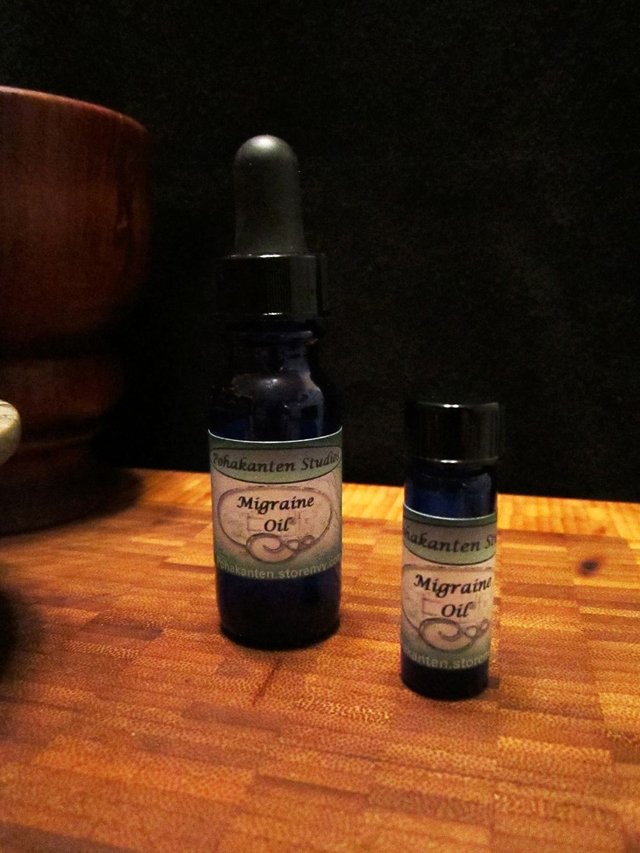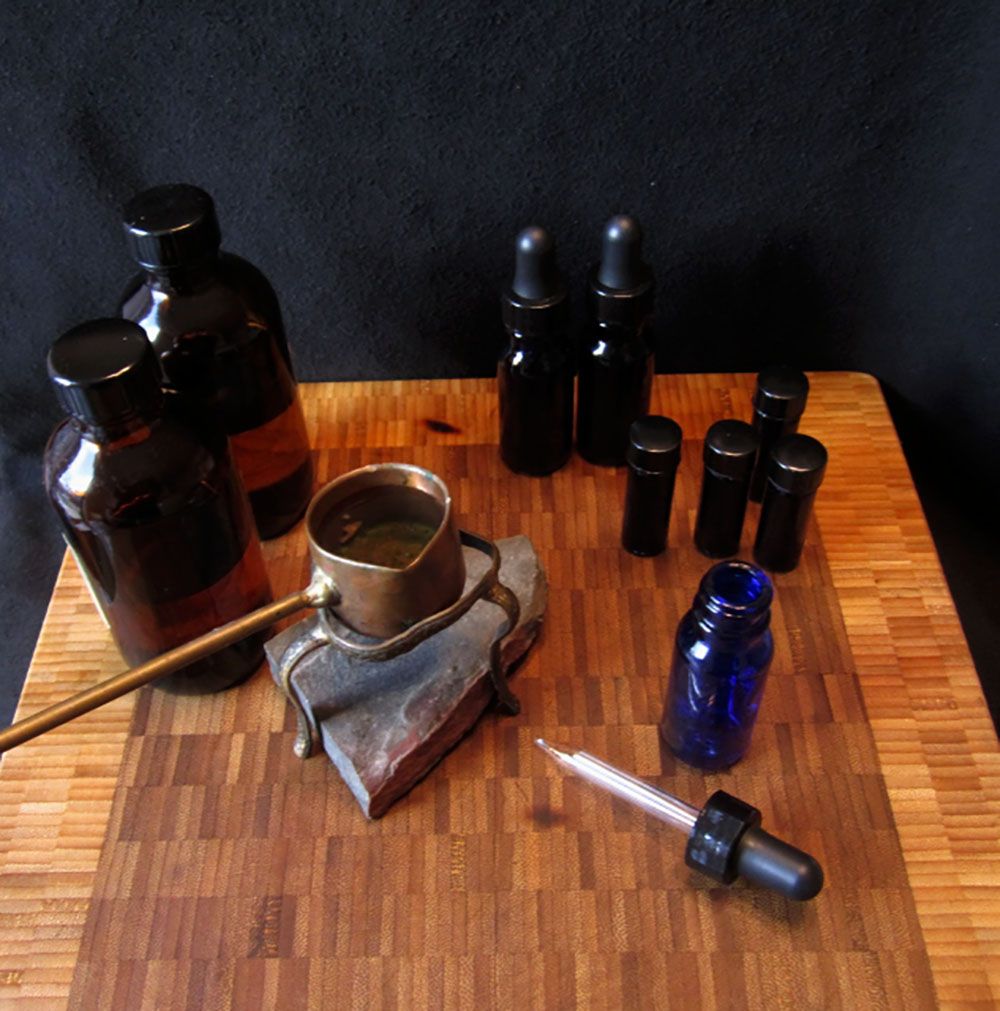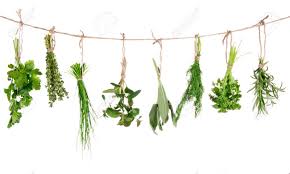Herbal Prep - Oil Infusion
Infusing oils with medicinal herbs is another completely different method. (Sorry this is a long one, but I made it as short as I could :O) The processes can take anywhere from a couple hours, to 6 weeks...and can be done with hot oil or room temperature oil. These oils can be used in cooking, ointments, salves, lotions, balms and creams...Sometimes we add essential oils, but for today we will be covering Herbal infusions.
Oils used this way, are called Carrier Oils. There are many many uses, and types of carrier oils, but often these mixtures will be strictly for topical use. Please always be aware of allergies to legumes, including peanut, before choosing oils. Yes, peanuts are legumes, not nuts.
---->>> I know that lately there has been a trend to take essential oils internally, but let me just say what I have learned from the get go, is that one RARELY uses essential oils in any way that they will be ingested. It can be extremely dangerous as the body is not able to break down most essential oils, and they can accumulate in the body. The ONLY times we use essential oils internally, is After we dilute them in a fair amount of a carrier oil. Period.
Essential oils are primarily used topically, or as aromatherapy (which we will get into far down the road)

Carrier Oils
There are so many types of carrier oils, first we will break them down into types.
*Liquid oils, are oils that remain liquid at room temperature, such as;
Oilve Oil
Almond Oil
Grapeseed Oil
Apricot Kernel Oil
Sesame Oil
Honey (not an oil, but used the same way)
(there are many types, and if one researches the vitamins and minerals in each one, it will become obvious which ones will be most beneficial to the treatment at hand)
*Cream Oils or Soft Oils, stay firm or semi-firm at room temperature, but liquefy with slight heat, like body temperature. Such as;
Shea Butter
Coconut Oil
Butter (can be used in a pinch)
Lard
Lanolin
*Hard oils, or Brittle Oils, stay very hard at room temperature, and need applied heat to melt...Such as;
Cocoa Butter
Beeswax (I know, it is a wax, but very versatile and we use it alot, so we add it into the oils)
(we use these for texture, a little for ointments and creams, and more for lip balms etc...)
Sterilize ALL bottles, tools etc, before beginning. Wash hands thoroughly, and/or wear sterile gloves. It is extremely important to keep your work surfaces clean and bacteria free...just like canning.

(Sorry for the old poor quality photos, they are all I could find right now...)
Cold Infused Oils- This process is simple, but takes weeks, and is only done with liquid carriers.
In a Glass jar that seals air tight, fill 2/3 with liquid oil to 1/3 herb. Cover tightly and shake well (being sure you have prepped any root, seed and rhizome by cutting/crushing). Put the jar in a cool dark place, and shake once or twice a day. Do this for 3 weeks for flowers and other light or delicate herbs...6 weeks for roots, seeds etc...Do not open to smell until the time has passed.
Once they have steeped long enough, you can then open and strain into dark glass sterilized bottles. If you are making decorative cooking oil, add a sprig of the whole plant (makes it unique and pretty). For medicinal oils, they will last up to 6 months at room temperature, or almost a year in the fridge or root cellar. These oils can be added into many recipes for oils, cream, ointments, balms etc...it is good to make them each with One herb for medicinal use, so you can later make recipes quickly as needed. Label them with which carrier oil was used, which herb, and the date made.
This same process can be used to make flavored honeys, or medicinal honey (such as lavender or osha root honey), the only difference, is that it always takes 6 weeks, and you cannot really shake, so you flip the jar once or twice a day, and be sure to use a wide mouth jar for ease of removing the honey later.


Heat Infused- This process only takes 1 to 6 hours, and while it can be used for flowers and other light herbs in a pinch, it is mainly used for herbs one would normally use decoction if water was being used. So roots, seeds, rhizome...etc...
This method can be done with any type of carrier, or a mixture of two or three types. (we will get into ratios and recipes down the road)
You will need a double boiler (a steel or pyrex bowl over a sauce pan works fine), or you can make a mini copper pot like I did. Don't be afraid of making your own tools, or asking a jeweler or welder to make them for you. I made my little copper pot from a pipe cap, and used heavy braising wire for the handle. I was making stands for carved eggs at the time, so bent one into a stand that fits over a piece of slate. I can put a tea light under the little pot to heat infuse in very small qty.
To clean copper, first wash the oils out with warm soapy water, rinse, then mix lime juice with salt and rub it over the copper with a cloth...rinse again and dry well, and it will be sparkly like new.

But I digress...
Either in a low temp copper candle pot, or a double boiler...use the same ratios generally, 2/3 oils to 1/3 herbs. Once the oils are completely melted, add in your herbs. Keep the oils handy in case you need to add a little more later...and then cover, and let infuse over low heat. DO NOT let your oil smoke or boil...keep it at a low, low heat.
1 hour for rhizome and light inner barks or dried berries
2 hours for seeds
3 hours or longer for roots and heavy rhizome
Keep in mind, if you used either soft or hard oils, this mix will firm up after you strain it. It doesn't take long, so as soon as they are done, strain and pour into sterilized tins or wide mouth glass containers.
Again, if you are prepping for future medicinal use, label them well, with carriers, herb, and date made.
If you are making balms, salves, lip balm etc...at this point you would add in any essential oils, stir, then quickly pour into their final containers. Once they are cooled they are ready to use.
Most fresh ointments, salves and lip balms will last between 6 months to 1 year if kept in a cool dark place.

Well, that is all for today...hope you enjoyed :)
This is a {Steemit Original} All words and photos by Elew
To read my other Medicinal Herb posts...
https://steemit.com/tea/@elew/teas-oils-ointments-and-balms
https://steemit.com/tea/@elew/medicinal-tea-vs-commercial-tea
https://steemit.com/tea/@elew/herbal-prep-infusion-and-decoction
Not all EO's are therapeutic food grade which makes a difference in ingesting. Sharing to get it seen!
I love Bear (osha) root honey!
Even food grade EOs need a carrier. They can be used in sugar for candies, in sauces, in food...all which act as carriers...I was referring to the trend where they have people putting drops into a cup of water to drink, and that is the same as putting the drops directly into the mouth because it is oil in water...you know. Better safe than sorry! Thanks for sharing :)
Me too on the Bear root honey, I try to have some ready by fall every year... :)
@elew got you a $2.19 @minnowbooster upgoat, nice! (Image: pixabay.com)
Want a boost? Click here to read more!
Great write up. I just wanted to say that I am using clove oil for a dry socket. It is almost the same thing my oral surgeon packed the socket with only his material had an 85% clove and 15% sesame seed composition. Anyways I have cotton with a very small amount of clove oil placed into the socket and this is helping greatly with the pain and allowing for the clot to form and heal.
Sorry to hear this! I need a wisdom tooth out and have been avoiding because of dry socket....get better soon!
I try to avoid the dentist in general.
Yes, clove oil works great to relieve tooth pain. It is good it has a carrier oil in it, and where you are only using a drop it is fine. I still tend to tell people to try not to swallow too much. One thing you can do to protect your stomach lining, is to eat some foods rich in olive oil, like black olives :) They are soft so shouldn't harm your tooth, and yet have plenty of oils to mix in your stomach with any clove oil you swallow.
If they have you on liquids, blend up an avocado into some juice, because that will do the trick too.
That's all some great advice. I've been sticking with bean soup and pudding. I think I forgot to mention that the clove oil is food grade, just encase someone reads this and thinks about doing the same.
Love seeing the photo's along with the extensive explanations. I'm a big fan of natural medicine and enjoyed learning something new today ;)

Thanks @nzfxtrader :) I like taking the photos too. Once we get our food prep area finished in our little turtle home, I will start taking step by photos for the more complex recipes...
Nice post, interesting and great photos. I am sure essential oils and oil making will be a long lived skill, especially in the future when we are looking towards other remedies other than Anti-biotics etc.
Yes, it will all be important to know. In our family myself and our youngest daughter are allergic to anti-biotics, so we have not used them, ever really. We mainly use echinacea, with added things here and there...goldenseal is good in alot of illnesses, but the end result is that we are Rarely ill. Antimicrobial herbs do not kill the body's good bacteria, so after an illness one is stronger, not weakened as with anti-biotics...